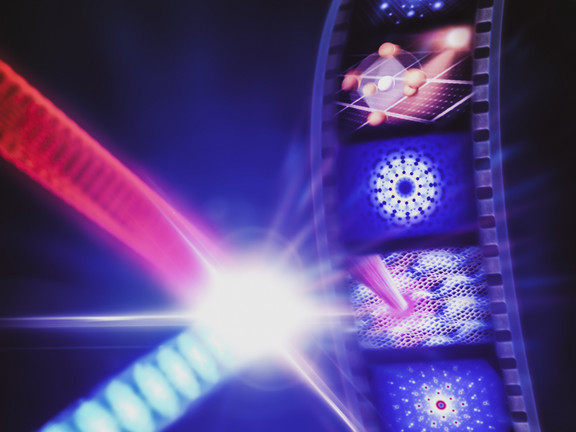MeV ultrafast electron scattering: a view into atomic world
- Kolloquium

MeV ultrafast electron scattering: a view into atomic world
X-ray, neutron and electrons are powerful tools to explore atomic world. MeV ultrafast electron scattering became a new frontier in ultrafast science due to its capability of following dynamics on femtoseconds scale with the high spatial resolution and sensitivity [1-4]. Furthermore, MeV electrons experience less multiple-scattering, and possess “real” flat Ewald-sphere; MeV ultrafast electron diffraction (MeV-UED) is an ideal tool to explore both structure and dynamics using total scattering technique. MeV-UED had broad and transformative impact on ultrafast science, such as the first 2-D materials ultrafast structure dynamics [5], break the long-standing puzzle of efficiency degradation of quantum dots [6], light-induced transient states of quantum materials [7-8], the first direct imaging of fundamental chemical processes [9-10] and hydrogen bond dynamics in liquid water [11]. Recently, we have demonstrated the first operando experiment in ultrafast [12], the first successful ultrafast visualization of incipient plasticity in dynamically compressed matter [13] and the first observation of Einstein-de Haas effect in an antiferromagnetic material [14]. We propose to develop new generation MeV ultrafast scattering instrument in Ruhr aera to address grand challenges in material, chemical and chemical science, such as imaging proton transfer and detangle electron-nuclear coupling.
- X.J. Wang et al, Phys. Rev. E , 54, No.4, R3121 -3124 (1996).
- X.J. Wang et al, Proceedings of the 2003 Particle Accelerator Conference, 2003, pp. 420-422 Vol.1, doi: 10.1109/PAC.2003.1288940.
- P Zhu et al, New Journal of Physics 17 (6), 063004 (2014).
- S. Weathersby et al, Rev. Sci. Instrum. 2015, 86, 073702−073707.
- E. M. Mannebach et al, Nano Lett. 15, 6889 (2015).
- Burak Guzelturk et al., Nat Commun 12, 1860 (2021).
- E. J. Sie et al, Nature 565,61–66(2019).
- A. Kogar et al, Nat. Phys.16, 159 (2019).
- J. Yang et al, Science 361, 64 (2018).
- T. J. A. Wolf et al, Nat. Chem. (2019).
- J. Yang et al., Nature 596, 531–535 (2021).
- J A. Sood et al, Science 373, 352 (2021).
- M. Mo et al, Nat. Commun. 13, (2022).
- A. Zong et al., Nature 620, 988–993 (2023).

![Band structure of 2D semimetal based on HgTe quantum well. Experimental points are obtained from the analysis of the cyclotron resonance in the quasi-classical approximation. Solid lines are predictions of the kp theory with no free parameters. Splitting of the conduction (e1,2) and valence (h1) band is due to the quantum confinement. [J. Gospodaric, AP, et al., PRB 104, 115307].](/storages/physik/_processed_/b/5/csm_Kolloquium_Pimenov_dd588be975.png)








